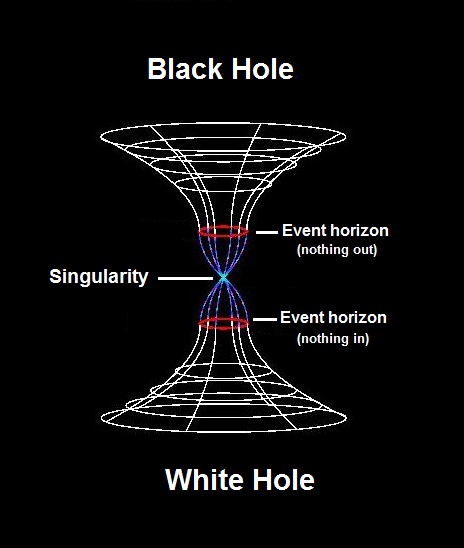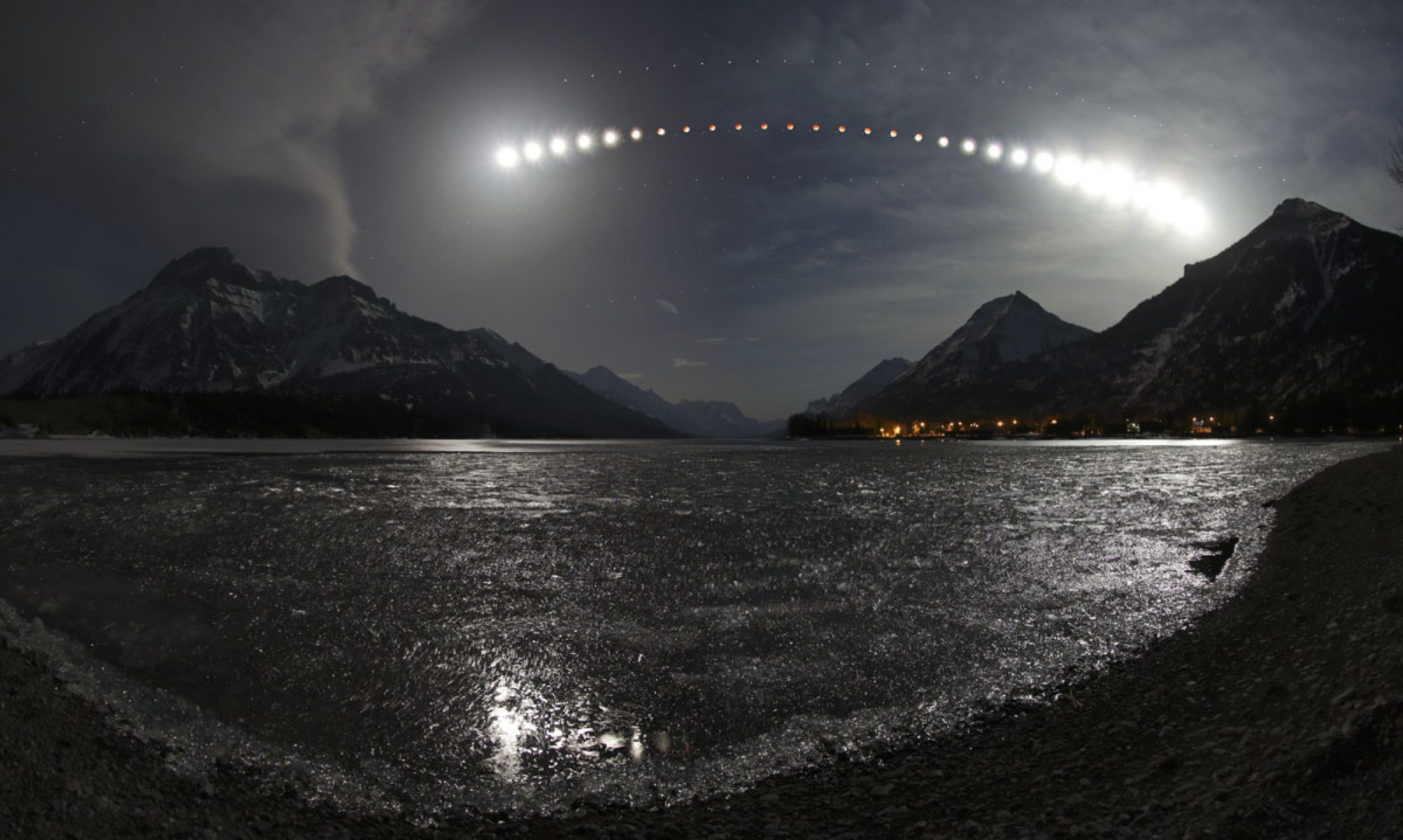
Via NASA/FQtQ
The theory of white holes came from Einstein’s Theory of General Relativity, just as the theory of black holes existing. In solving for Einstein’s theory, one of the solutions requires that there cannot be any edges to space-time. If an object falls into a black hole, at some point it reaches singularity. At singularity, space-time is curved so much that it becomes an abrupt edge, and you can no longer predict the trajectory of the object falling into the black hole. But, in the Theory of General Relativity, that is not allowed. To account for this, there must be a region in which a black hole does not only draw matter within but is also ejecting matter.
A black hole and a white hole do share some characteristics. At singularity of both, all matter is infinitely dense. Both also have event horizons. The event horizon of a black hole is the point where matter can no longer escape, but in a white hole, matter can no longer return.
But do white holes exist? Some scientists say no because a white hole would violate the second law of thermodynamics. Suppose for a moment, what if a white hole is the opposite side of a black hole, also known as a wormhole? Could this be a possible way to traverse space quickly? Could galactic explorers use wormholes to someday find suitable planets for humankind to inhabit, once our home planet is swallowed up by our Sun, when it eventually turns into a red dwarf star?
The problem with this wormhole theory is that the physics of wormholes are inherently unstable. Before the time it would take to travel through a wormhole, at greater than the speed of light, the wormhole would close. Still, it is an interesting thought.
